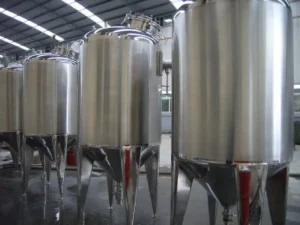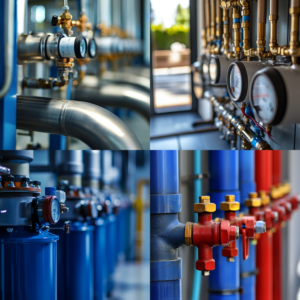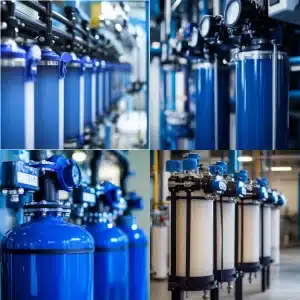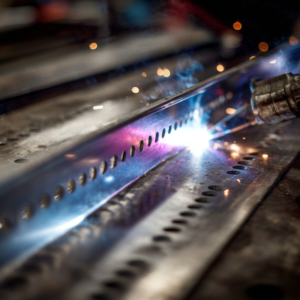
FMEA Failure Modes is a systematic way to identify and evaluate what might go wrong in pressure vessel design, fabrication, or operation. It helps you uncover potential issues early, assess their impacts and likelihood, and prioritize which risks to address first. When applied to pressure vessels, this approach supports safety compliance, regular inspection, and maintenance to ensure long‑term reliability.
Understanding FMEA Failure Modes in Pressure Vessel Context
FMEA Failure Modes helps to proactively reveal possible failures in pressure vessel systems. In the context of pressure vessel design and fabrication, this approach becomes especially important when aiming for Pressure Vessel Safety Standards and Compliance.
FMEA (Failure Mode and Effects Analysis) examines each component, weld, joint, or process step of a pressure vessel to detect how and where a failure might occur. For pressure vessels, failure modes might include material fatigue, weld cracking, corrosion, seal failure, overpressure, or fabrication defects. This analysis enables engineers and fabricators to align with regulatory requirements such as What is ASME code for pressure vessel safety and related guidelines for structural integrity.
Common Failure Modes for Pressure Vessels
When applying Failure Mode and Effects Analysis to pressure vessels, common failure modes to consider include:
Material fatigue or cracking due to repeated pressure cycles
Corrosion from chemical exposure or moisture
Weld failures or incomplete fusion at seams and joints
Leakage or seal failure around nozzles, flanges, or manways
Overpressure or pressure spikes beyond design limits
Improper fabrication leading to dimensional deviations
Inadequate support or restraint causing stress concentration
Each failure mode must be carefully assessed. The analysis should include the effects of the failure mode — for example, a weld crack could lead to leakage or catastrophic rupture under pressure, while corrosion might gradually weaken the vessel wall. By mapping these out, you can prioritize risks for mitigation efforts.
How to Rate and Prioritize Failure Modes
When you analyze FMEA Failure Modes for pressure vessels, you should systematically evaluate:
Severity: Determine how serious the outcome would be if a failure occurred. For pressure vessels, safety hazards or catastrophic failure make severity high.
Occurrence: Estimate how likely the failure mode is to happen under normal operating conditions or environmental exposure.
Detection: Assess how likely you are to detect the problem before it causes a failure — for example, through inspection or monitoring.
Using these three factors helps prioritize which failure modes pose the greatest risk and should be addressed first. This prioritization is especially important when aiming for full Pressure Vessel Safety Standards and Compliance and ensuring the vessel meets What are the safety standards for pressure vessels.
Integrating Pressure Vessel Inspection and Maintenance
A robust plan for Pressure Vessel Inspection and Maintenance complements FMEA Failure Modes analysis. Once failure modes are identified and prioritized, the vessel owner or fabricator should implement a maintenance and inspection schedule that ensures early detection of potential issues.
When deciding How often do pressure vessels need to be inspected and What to include in a pressure vessel inspection checklist, this should guide planning. Typical items on a pressure vessel inspection checklist include:
Visual inspection of welds, seams, and joints
Wall‑thickness measurement to detect corrosion or erosion
Non‑destructive testing (NDT) such as radiographic or ultrasonic testing for weld integrity
Inspection of seals, gaskets, nozzles, flanges
Pressure testing under controlled conditions
Inspection for signs of fatigue, deformation, or stress concentration
Such a checklist helps ensure the vessel remains compliant with safety regulations and operates reliably throughout its service life.
Why RedRiver LLC Embraces FMEA Failure Modes
At RedRiver LLC, we recognize the importance of FMEA Failure Modes as part of a comprehensive risk management and quality assurance strategy. When we design and fabricate pressure vessels, we systematically integrate FMEA results into our engineering review and fabrication procedures.
This proactive risk‑based approach ensures our pressure vessels meet applicable codes and standards. We combine rigorous design practices with a culture of inspection and maintenance to deliver vessels that stand the test of time. We encourage clients to adopt regular Pressure Vessel Inspection and Maintenance, using FMEA outputs to shape inspection frequency and scope.
Best Practices for Conducting FMEA Failure Modes for Pressure Vessels
To maximize the value of FMEA Failure Modes in pressure vessel design and operation:
Involve cross‑functional teams including design, fabrication, inspection, and operations experts to ensure diverse perspectives.
Document all potential failure modes, even those considered unlikely — sometimes rare events cause the most damage.
Link each failure mode to inspection and maintenance actions to ensure continuous oversight.
Use a pressure vessel inspection checklist derived from FMEA as part of inspection and maintenance planning.
Regularly review and update the FMEA when design changes, operating conditions change, or after incidents.
Conclusion on FMEA Failure Modes for Pressure Vessels
FMEA Failure Modes provides a structured method for understanding and managing risks in pressure vessel design, fabrication, and operation. When combined with regular Pressure Vessel Inspection and Maintenance, and adherence to Pressure Vessel Safety Standards and Compliance, it helps ensure vessel integrity, operational safety, and long service life. For organizations seeking reliability and risk reduction, FMEA is an essential tool.
Ready to Apply FMEA Failure Modes in Your Projects?
If you want a partner who applies FMEA Failure Modes and high‑quality fabrication standards in pressure vessel design and manufacturing, consider partnering with RedRiver LLC.
FAQs
1. What is FMEA Failure Modes and how does it apply to pressure vessel manufacturing?
FMEA Failure Modes is a structured process to identify potential failure points and their effects in a system. In pressure vessel manufacturing it helps find risks in design, materials, welds, fabrication, or operation before they cause problems.
2. What are the safety standards for pressure vessels that FMEA can help meet?
FMEA supports compliance with widely recognized safety frameworks such as What is ASME code for pressure vessel safety.
3. How often do pressure vessels need to be inspected when using FMEA Failure Modes?
Inspection frequency depends on vessel use, operating conditions, and risk profile defined by the FMEA. Regular Pressure Vessel Inspection and Maintenance ensures risk mitigation.
4. How to inspect a pressure vessel as part of maintenance and risk prevention?
Use a detailed inspection checklist covering welds, wall‑thickness, seal integrity, and pressure testing.
5. What to include in a pressure vessel inspection checklist to complement FMEA?
Include visual inspections, wall‑thickness checks, non‑destructive testing, and condition assessment of seals, nozzles, and structural integrity.
Key Takeaways
FMEA Failure Modes is vital for identifying and prioritizing potential failure modes in pressure vessel design, fabrication, and operation.
Integrating FMEA with regular Pressure Vessel Inspection and Maintenance ensures long‑term safety and reliability.
A well‑structured inspection checklist is essential for compliance and operational safety.
Involving cross‑functional expertise improves the accuracy and effectiveness of FMEA.
A proactive approach minimizes risks and supports regulatory compliance.
Related Blog Post

How a Glycol System Works

Ethylene Glycol Water: A Complete Heat Transfer Guide

Water Filter Replacement

Why Use Stainless Steel Sheet Metal Fabrication?

How Does Stainless Steel Sheet Metal Fabrication Work
No subpillar set for this blog post.
About Author

